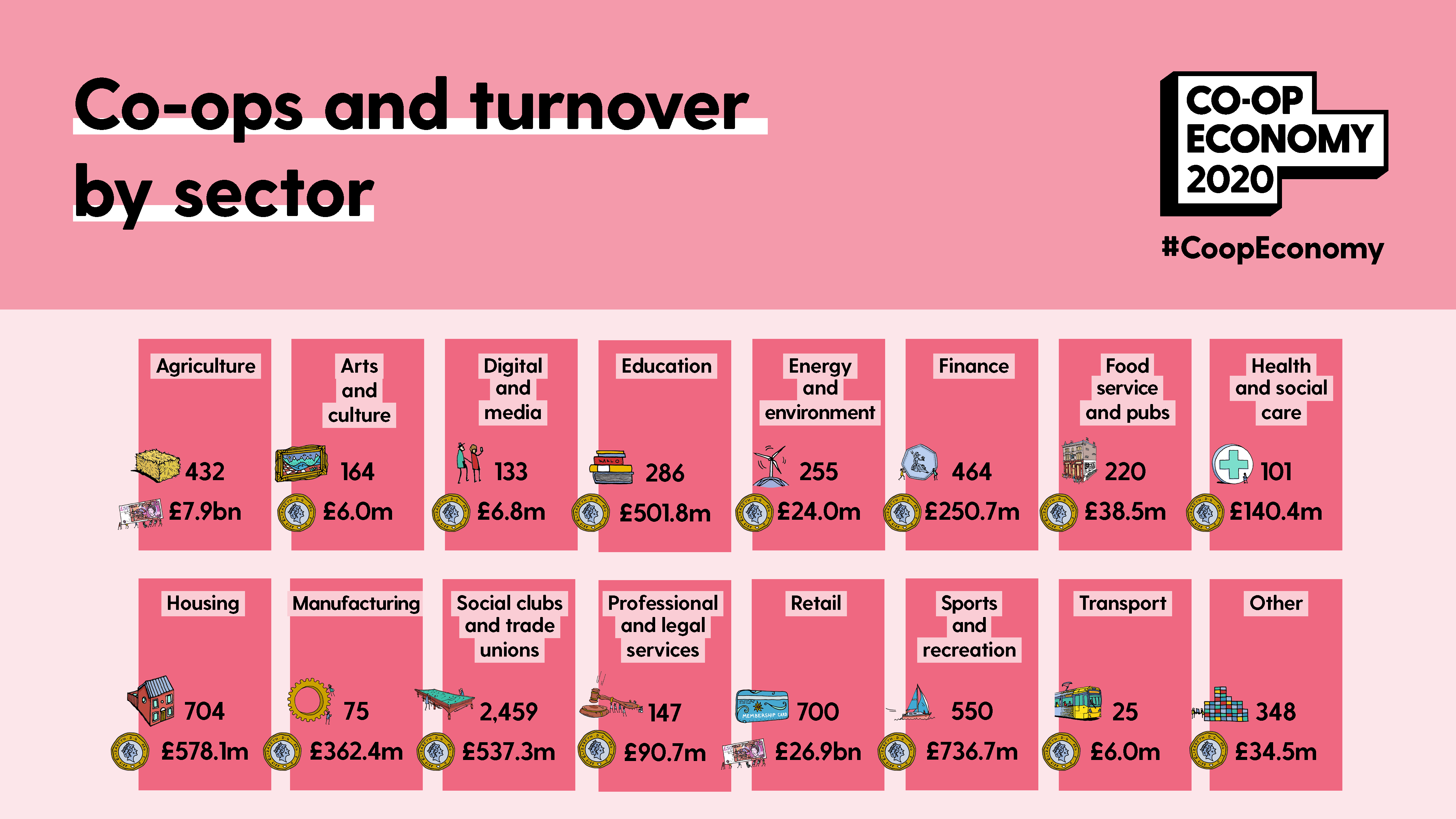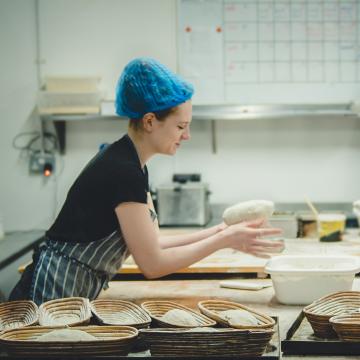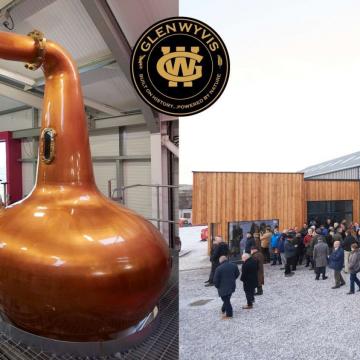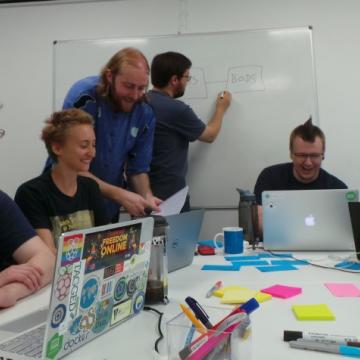Types of co-ops

Co-ops are found everywhere and together they contribute over £38 billion to the UK economy. Learn more about the different types of co-ops and who owns them.
Co-ops are found in all sectors
Co-operatives span the economy. They operate in robotics, in farming, in graphic design, in education, in housing, in sport, the arts and many other sectors. Whatever the industry there is usually a co-op!
Co-ops are often set up to solve a problem or in response to an issue – such as a community coming together to take over a much-loved community space, a group of freelancers coming together for greater job security, or workers who want to have a say in creating a more ethical business.

Types of ownership
The members own the co-op and decide how it is run. In different types of co-op, Members might be workers, customers, suppliers, local residents, other enterprises - or a combination of these.
Worker owned
In a worker co-op, the co-op is run for the benefit of - you guessed it – people who do the work. Worker co-ops like Leeds Bread Co-op, Delta-T Devices and Creative Coop are democratically owned and collectively controlled by the workers, who all participate in decision making.
These types of co-ops tend to have very flat structures and no hierarchy – some even pay all the staff equally no matter what their role. The workers are involved in decision making and how any surplus is shared out or reinvested in the business. How this works in practice depends on what the co-op has written in its rules.
Producer owned
Producers or suppliers may come together to form a co-op to get a better deal for their products. A good example of this are farmer-owned agricultural co-ops, who work together to share resources and use their collective bargaining power. Read about Aspatria Farmers, a farmer-owned co-op which sources farming supplies for its 900 members operating across Cumbria, the north east and south-west Scotland
Customer owned
Credit unions like The Co-op Credit Union are good examples of customer owned organisations. They exist to serve the needs of their members, which in this case is access to affordable finance.
Community owned
Community owned businesses can be co-ops and raise finance through community shares. People invest often small sums of money and become co-owners of vital local enterprises – from pools to pubs, community housing to heritage buildings. No matter how much you invest it's one member, one vote, so everyone has a stake and a say in how the organisation is run for the benefit of the community. One such example is Glenwyvis Distillery, which saw a rural community in Scotland come together to start the world's first community owned distillery.
Multi-stakeholder
Multi-stakeholder means a combination of members own and control the co-operative business. So this might mean a housing co-op with residents and workers making decisions together. Or a multi-million pound retail co-operative where members are elected to have a say to represent customers and the communities where they operate.

Guide to co-ops

Why worker ownership works: Leeds Bread Co‑op

The world’s first community-owned distillery: Glenwyvis Distillery

Freelancers join forces to tackle corruption and tax evasion: Open Data Services
